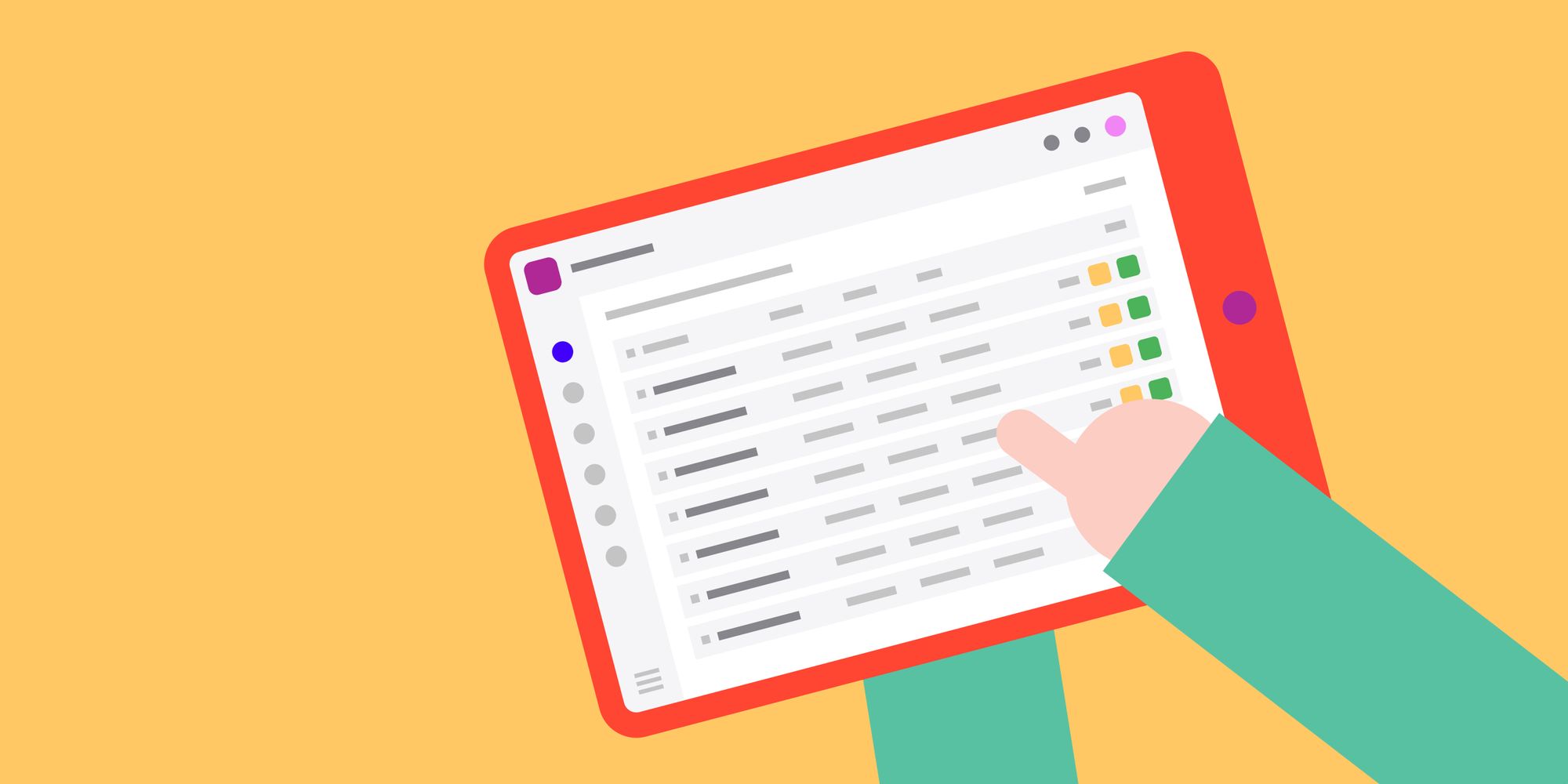What is Customer Flow?
We take a look at the idea of customer flow, how to measure it, and how you can improve it to increase sales and delight customers at your business.

What if there was a way to increase customer engagement without changing the products you sell, the number of people on your team, or your marketing strategy? Understanding customer flow can help you do just that.
The way your customers interact with your business is directly correlated to how they feel about your business and how likely they are to come back. This matters, since studies consistently show that retaining customers is 5-25 times less expensive than acquiring new customers.
What is customer flow?
Customer flow refers to how customers move through the shopping experience. This includes their physical navigation — such as the amount of room they have in shopping aisles or the amount of time they spend in lines — as well as things like product placement and ease of access to what they need or want.
What’s the connection between customer flow and the customer journey?
The customer journey starts the moment your customer hears about your brand or walks into your store and continues even after they walk out the door through things like follow-up communications. The customer flow — the way they’re guided through that shopping experience — sets the stage for whether the customer journey is a positive or negative experience. That customer experience matters: 73% of customers say that a good experience is key to impacting their loyalty to brands.
With a strong customer flow, each touchpoint in the customer journey is carefully designed to improve the customer experience. From your advertising and signage to your customer service and transaction process, your business should aim to provide a smooth journey for your guests.
A poor customer flow, on the other hand, can lead to unhappy customers. And this is critical, since more than 60% of customers report having switched from a brand to its competing brand due to a poor experience.
Why should you care about customer flow?
Customer flow is one of the most important things to focus on when it comes to improving your business. While advertising to customers is one end of your sales funnel, customer flow is the rest.
Without a strong system, your sales will suffer. Improving customer flow creates a better, more curated customer experience – leading to an increase in average revenue per customer and also an increase in the number of customers you can serve (without needing to hire more staff or increase your retail space).
Improve customer experience
The first, and most obvious, reason to care about customer flow is that it can improve the customer experience. When customers can flow easily through your store, following signage that makes sense to locate items or services they need, benefiting from stellar customer service interactions, and experiencing minimal wait times, they come away from your business feeling positive.

Maximize value of available floor space
Your business has a limited amount of floor space. The last thing you want is to be further limited by crowds of guests waiting to check-out or speak with staff. This not only adds bottlenecks for your waiting customers, but can create traffic jams and an unpleasant environment for all your other guests.
Shifting away from physical lines and implementing a virtual queuing system can help improve your customer flow and make the most of the floor space you have. Allowing your customers to wait in a virtual queue will reduce physical lines, creating a less congested atmosphere. Plus, without having to wait in a confined queue, customers are free to continue browsing while they wait for a service or to check out.
Removing physical queues will provide an instant boost to customer satisfaction. A recent Waitwhile consumer survey found that 75% of consumers associate waiting in line with annoyance, frustration, apathy, and boredom.
Consumer Survey: The State of Waiting in Line
Reduced staff frustration
Your customers aren’t the only ones who will benefit from improved customer flow. Studies have shown that people who wait longer in line are more likely to take longer when it’s their turn. This takes a toll on your staff, who need to deal with unhappy customers while simultaneously trying to reduce everyone else’s wait.
A recent Waitwhile survey of frontline retail workers found that 70% have to deal with angry customers regularly, and that long lines are the number one reason customers get upset. The emotional labor required to manage these tense situations is taxing. Our survey also found that nearly 1 in 2 frontline retail workers are apathetic or unhappy at work.
These issues can be alleviated by improving customer flow. Having fewer customers lined up, for example, can not only make your customers happy, but it can also reduce the pressure employees feel, allowing them to deliver standout service while improving their overall job satisfaction.
Employee Sentiment Report: Retail
Increase purchases
Imagine walking into a congested store, filled with shoulder-to-shoulder traffic, poorly labeled signs, and rude employees. How likely would you be to linger in such an environment? If you decided to stay — and that’s a big if — the more likely course of action would be that you’d find the exact item you were looking for and leave as soon as possible.
Improving customer flow makes your store a more comfortable place for customers to be in. This leads to a more peaceful shopping experience, which can inspire more impulse purchases. It can also lead customers to return to your establishment more frequently. Both of these factors can have a significant impact on your business’s revenue.
What is customer flow management?
You understand why customer flow matters, but if you’ve never trained in customer flow management, it may feel like an abstract thing to try to address. The key to managing customer flow is to break it down into manageable, concrete elements that you can directly control.
Customer flow management involves evaluating the core elements of your customer flow, setting goals for your team, and improving key performance indicators (KPIs) so that your customer flow continues to improve over time. It is a targeted strategy for improving the overall customer experience, improving brand loyalty, and ultimately increasing revenue.
When you seek out solutions to make improvements to your customer flow, be sure that they integrate into existing business tools, are simple for both your staff and your customers, and address major pain points in a logical way.
Evaluating the core elements of customer flow
One of the best ways to evaluate the core elements of customer flow is to create a customer journey map (CJM). Your CJM should include every interaction your customers have with your business, including:
- Advertising that may have brought them into the store or onto your website
- Tools they used to evaluate products or interact with your company
- Interactions with sales associates
- Time spent in the store or on your website
- Their path through the store or through your website
The customer journey map helps you define the stages of your relationship with your customers. At each stage, you can set goals and identify KPIs to track to improve the experience. For example, if you identify that the time customers spend in lines is too long, you’ll want to consistently measure the average wait time to track progress.
The modern consumer is fluid, having no qualms about jumping from one channel to another during a single path to purchase. Because of this, the typical customer journey today is not necessarily linear. It involves hopping back and forth between channels – both online and physical. As such, your CJM should be reflective of this omnichannel environment.
How to improve customer flow

Improving an aspect of your business as important as customer flow can feel overwhelming, especially if you’ve identified multiple pain points within your CJM. Instead of trying to tackle the entire project, tackle the process one step at a time. Choose one pain point to focus on, and set a SMART goal (Specific, Measurable, Attainable, Relevant, and Time-Bound) to improve upon that pain point.
One of the biggest challenges for customer flow often comes at the end of the process, when customers are waiting in line to complete an order. Because this is a major pain point, it’s a good one to address first.
Regardless of which pain point you choose to address, the next step is to determine which KPIs you should look at to evaluate your progress on that goal. For example, if you were trying to improve the time customers spent waiting in line, a KPI would be “average time spent in line.” By reducing this number over time, you would know you were improving that pain point.
Finally, choose a specific action to take to improve upon that pain point. In the above example, your specific action may be to implement virtual queues so that customers could continue shopping while queuing – and feel like they barely waited at all.
You may even find that as you conquer specific problems, other problems reduce on their own. For example, by addressing long lines, your staff members are less likely to have to handle customer complaints, reducing their stress. As a result, they may naturally provide better service, leading to an improved overall customer experience.
Taking things one step at a time allows you to evaluate the effort you’re putting in and understand how new processes are impacting your overall customer flow. Once you’ve improved one aspect of customer flow, you can move on to the next pain point, continuing to improve the customer experience piece by piece.
Customer Flow Management Checklist for Retail

